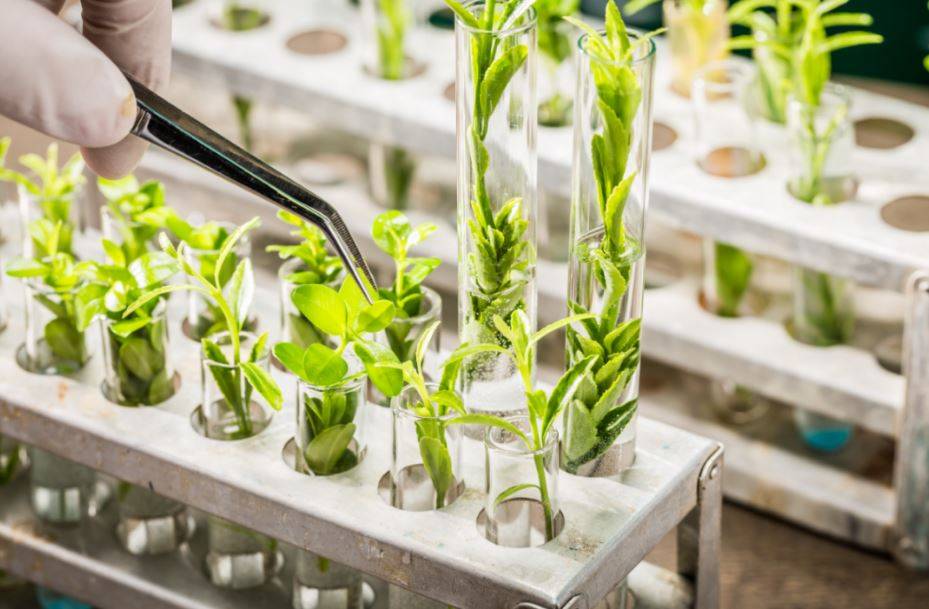
Commercially viable biofuel crops are critical for decreasing greenhouse gas emissions, and a new tool created by the Center for Advanced Bioenergy and Bioproducts Innovation (CABBI) should help speed up their development, as well as progress in genome editing in general.
Crop genomes are fine-tuned over generations of breeding to improve certain features, and until recently, breeders had to rely on naturally occurring variety for selection. Although CRISPR/Cas9 gene-editing technology has the potential to change this, the software tools required for designing and analyzing CRISPR experiments have so far been developed for editing in mammalian genomes, which do not share the same properties as complex crop genomes.
First Open-Source Software Tool
Created by scientists at CABBI, a Department of Energy-funded Bioenergy Research Center, CROPSR is the first open-source software tool for genome-wide design and evaluation of guide RNA (gRNA) sequences for CRISPR research (BRC).
According to the study published in BMC Bioinformatics, the genome-wide strategy considerably reduces the time necessary to create a CRISPR experiment, lowering the complexity of dealing with crops and speeding up gRNA sequence design, evaluation, and validation.
"CROPSR provides the scientific community with new methods and a new methodology for executing CRISPR/Cas9 knockout experiments," stated Hans Muller Paul, a molecular biologist and Ph.D. student at the University of Illinois Urbana-Champaign, and co-author Matthew Hudson, Professor of Crop Sciences. "With the new programme, we want to speed up discovery and reduce the number of failed experiments."
To better serve crop geneticists, the researchers developed software that removes limitations imposed by other packages on the construction and evaluation of gRNA sequences, which are used to locate targeted genetic material.
Members of the team also created a novel machine learning model that avoids avoiding guides for repeating genomic regions seen in plants, which is a difficulty with current methods. Even in non-crop genomes, the CROPSR scoring model generated substantially more accurate predictions, according to the authors.
"The idea was to integrate features that would make the scientist's life easier," Muller Paul explained.
Many crops, especially biofuel feedstocks, have polyploid genomes with multiple sets of chromosomes. Furthermore, several gene-editing software programmes based on diploid genomes (such as those found in humans) have issues with crop genomes.
"It can take weeks or months to discover you aren't getting the results you wanted," Muller Paul remarked. The scientists were able to customize CROPSR for plant application by removing built-in biases seen in existing software tools by using a genome-wide approach. Because they're based on human or mouse genomes, where multiple copies of genes are less common, those techniques penalize gRNA sequences that hit the genome many times in order to avoid producing changes where they're not supposed to.
When it comes to crops, however, the goal is frequently to alter many positions in order to eliminate all copies of a gene. Scientists used to have to construct four or five mutation experiments to knock out each gene separately, which took a lot of time and work.
Rather of searching an internet database for a certain gene, then using current methods to develop distinct guides for five different sites and conducting numerous rounds of experiments, scientists might search their own database for the gene and see all the guides available. CROPSR could also point to other parts of the genome to target. Researchers may choose a guide that hits all of the genes, making the experiment considerably easier and faster to develop.
Paul expects that in the future, researchers will keep track of their unsuccessful and successful experiments to help provide the data needed to train a crop-specific model. "We could be looking at some really intriguing breakthroughs in training machine learning models for CRISPR applications, and potentially other models as well if the collaborations work out.”
(Source: University of Illinois)
















